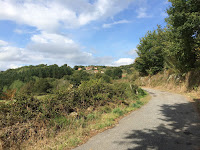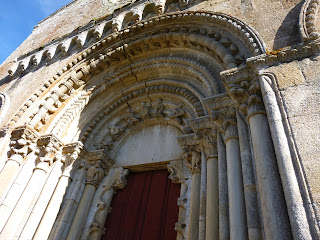 |
A year ago I posted an interview with Mark Noce, following the publication of Between Two Fires. (You can read that interview HERE ) I also had reviewed the book the week before, and there's another "HERE" in that post that will take you back to the earlier interview.) However, I will be interviewing him once again on my Victorian Scribbles blog "next door". Come back for the new interview in a couple day to learn a bit more about Mark.
I've already pre-ordered my copy of Dark Winds Rising. It's going to be released December 5th. Next Tuesday! Here's the publisher's link that can give you several different places to order it by one click: Go HERE.
Meanwhile, here is the publisher's description of what to expect:
"Mark Noce returns to Medieval Wales with Dark
Winds Rising, his second book about the Braveheart-like Queen Branwen in
this epic historical series.
"Three years after
uniting the Welsh to defeat the Saxons and settling down with her true love,
Artagan, Queen Branwen finds her world once again turned upside down as Pictish
raiders harry the shores of her kingdom. Rallying her people once more, she must
face her most dangerous foe yet, the Queen of the Picts. Ruthless and cunning,
the Pictish Queen turns the Welsh against each other in a bloody civil war.
"All the while Branwen
is heavy with child, and finds her young son’s footsteps dogged by a mysterious
assassin who eerily resembles her dead first husband, the Hammer King. In the
murky world of courtly intrigue, Queen Branwen must continually discern friend
from foe at her own peril in the ever-shifting alliances of the independent
Welsh kingdoms.
"Branwen must somehow
defeat the Picts and save her people before the Pictish Queen and the assassin
destroy their lives from the inside out. Just as the Saxons threatened
Branwen’s kingdom from the landward side of her realm in Between Two
Fires, now the Picts threaten her domain from sea in this thrilling sequel.
But she soon finds that the enigmatic Picts are unlike any foe she has faced
before.
Mark Noce bases his
novel on primary sources, as well as myths and legends that help bring the Dark
Ages to life. Set in a time and era in which very little reliable written
records or archeological remains have survived, the characters and some of the
place names are fictional, but the physical environment, the historical
details, and the saga of the Welsh people is very real.
"This continuation of
Branwen's story combines elements of mystery and romance with Noce's gift for
storytelling."
And here is the author's info:
"MARK NOCE writes historical fiction with a
passion. Born and raised in the San Francisco Bay Area, he has been an avid
traveler and backpacker. He earned his BA and MA from Cal Poly, San Luis
Obispo, where he also met his beautiful wife. By day, he works as a Technical
Writer, having spent much of his career at places like Google and Facebook. He
also writes short fiction online. When not reading or writing, he's probably
listening to U2, sailing his dad's boat, or gardening with his family."
BTW: In case you want to start at the beginning, you can also order Between Two Fires at all those sites HERE.
Those of you who want to know more about the author can visit his website HERE and learn more about his books, his blog, and his appearances and events. (Pssst, for those of you in the Sacramento area, he'll be at the Avid Reader Saturday, January 13th and 5:00 p.m.) He'll be doing reading and signings in other places too, listed on his website, but that especially piqued my interest, since I live in Sacramento.









































